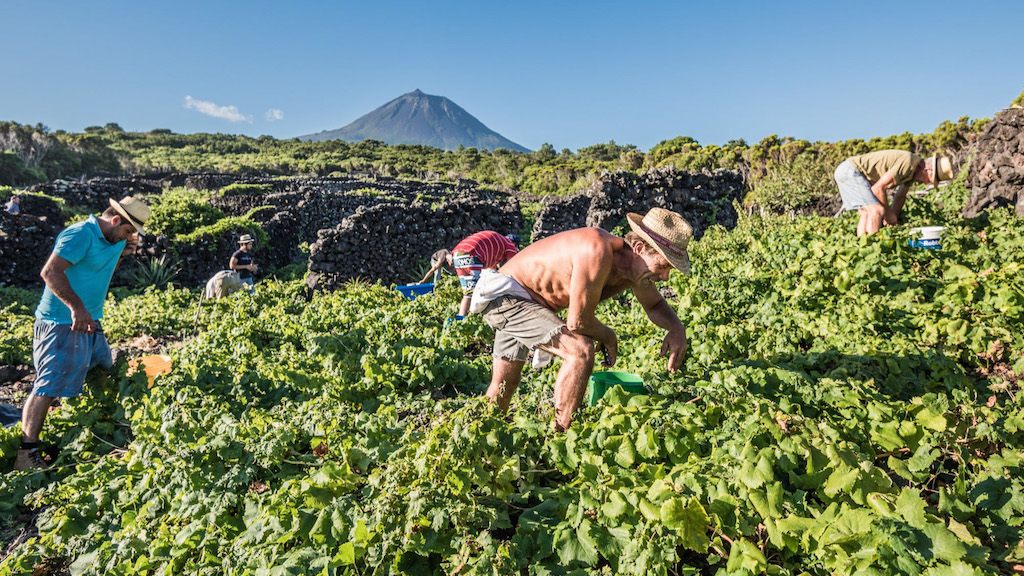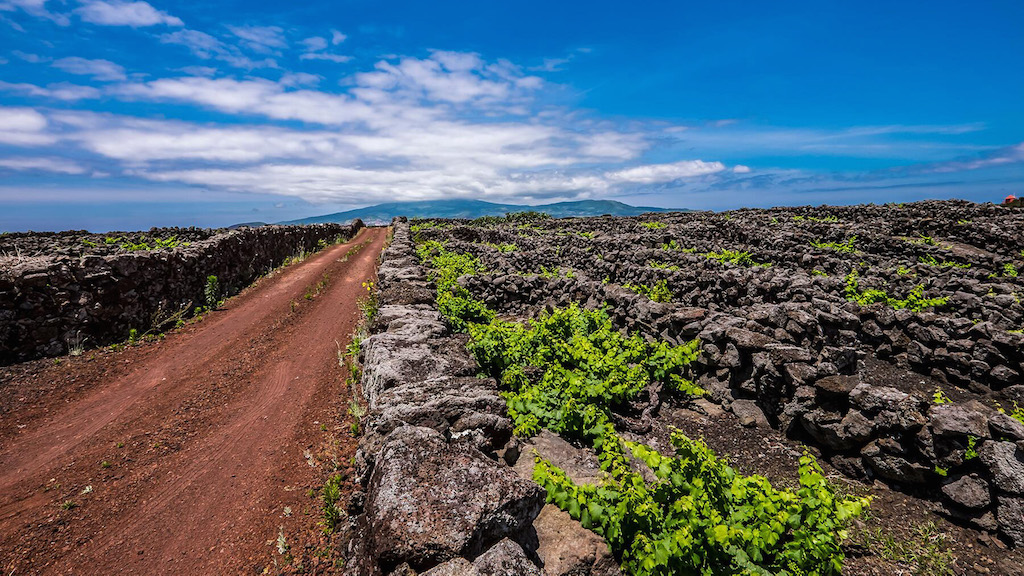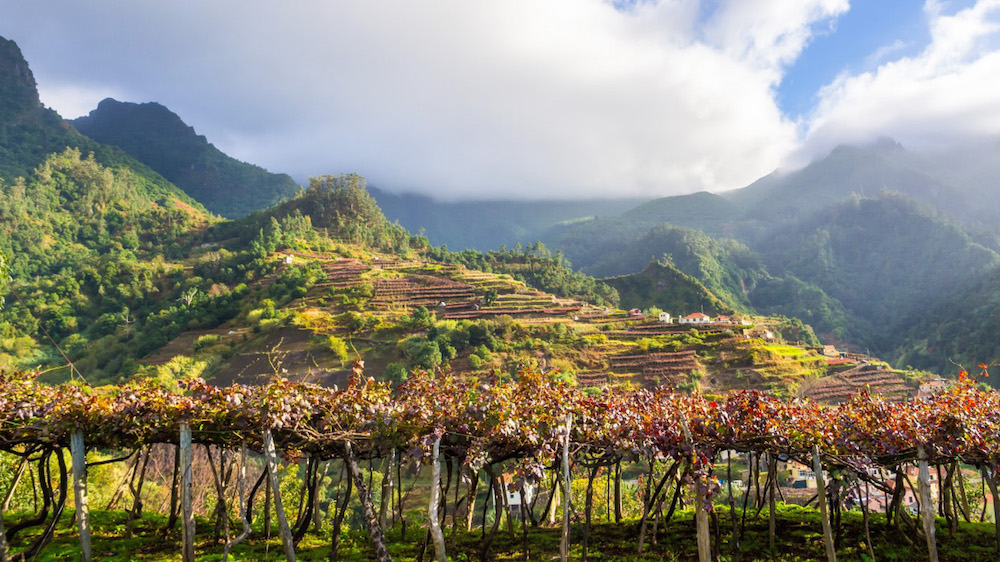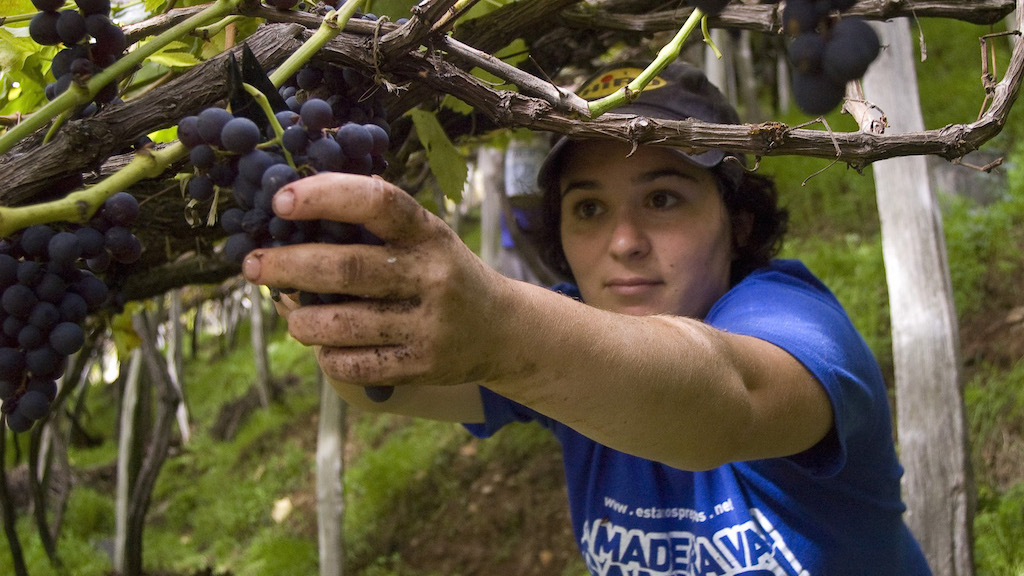Azores and Madeira: discover the wines from the Portuguese islands

Among the 13 different regions that make up the wine map of Portugal, today we invite you to travel to the Atlantic, to the Portuguese islands of Madeira and Azores.
If Madeira has been popular for a while due to its famed fortified wine by the same name, we’d love to introduce you to other great drinks being produced in the islands.
As for the Azores, did you know that this is one of the most exciting wine regions in Portugal right now? There are good reasons for all the hype. Read on and find out more!
Wine from The Azores
More than 1500km apart from continental Portugal, half way between Europe and the Americas, stands the archipelago of The Azores. This is the home of one of the most impressive wine regions in Portugal. Out of the nine islands that make up the Azores, three of them produce wine: Graciosa, Pico and Terceira.
Wine production has been happening in these islands since the 15th century, but only in recent years Azorean wine has started to get the recognition it has clearly deserved for a while. The DOC labeling introduced in 1994, protecting these wines under Controlled Denomination of Origin, has vastly contributed to the increase of awareness and appreciation of wine from the Azores.
The conditions for farming in these islands are rough. The terrain is rugged and the volcanic soil isn’t always easy to work on. But it’s precisely these characteristics, associated with the salty tones of the Atlantic breeze, that give Azorean wine its distinct attributes.
While tasting Azorean wine can be done in mainland Portugal and, if you get lucky, even abroad, visiting the vineyards where the grapes for these wines are grown is such a treat. In a region notorious for the presence of all four seasons in one given day, protecting the plants is a must and has been accomplished by separating small plots known in Portuguese as currais, using basalt stones. If the currais shield the vines from the elements, the floor is dotted with small lava stones meant to absorb the heat from the sun and radiate it towards the plants to aid in their healthy growth.

The history of winemaking in the Azores has been watered with sweat, blood, tears and endless dedication of local people. But it’s this unique history filled with adversity and the peculiar evolution of the viticulture of the region that is behind the creation of such unique wines.
More than 30 varieties of white and red grapes are grown for wine in the Azores, but Verdelho, Arinto dos Azores and Terrantez are by far the most cultivated types. Even though red wines are also good, and here you can find anything from rosés to sparkling or fortified drinks, white wines are the ones that stand out the most.
While Graciosa and the Biscoitos region of Terceira islands have some wine production, the vast majority of wine produced in the Azores happens in the island of Pico. This picturesque island is famous for Portugal’s highest point, Mount Pico (2351 m), which can be seen no matter where you go on the island.

Azorean wine isn’t always easy to find, surprisingly, even in the Azores! When in the islands, we recommend visiting Cooperativa Vitivinícola Da Ilha Do Pico (CVIP) or Azores Wine Company by acclaimed Portuguese winemaker António Maçanita. Elsewhere, try your luck with Made in Azores, an online store that delivers both in Portugal and abroad, or Garrafeira Nacional in Lisbon itself.
Fresh, acidic and slightly salty, the wines from the Azores are waiting for you to discover them!
Wine from Madeira
Madeira has become synonymous with the fortified wine that goes by the same name, but Madeira wine isn’t actually the only wine produced here.
Vineyards have been grown in Madeira since the 15th century, when the Portuguese first reached the islands. The first grapes to be cultivated in Madeira were native from mainland Portugal but, when the English arrived to Madeira as well, they brought with them even a wider range of grape varietals and particularly a wine culture that translated into better kept and exploited vineyards.

The most cultivated grape in the islands these days is Tinta Negra, for red wine, while the main white varieties include Sercial, Verdelho, Boal and Malvasia.
Madeira fortified wine, the second most popular fortified wine in Portugal after Port, is still the quintessential wine from Madeira. Its unusual qualities include a vast range of sweet tones and rare longevity which some claim translates into a virtually eternal shelf life. These Madeira wines tend to be complex and, thanks to the Madeira island terroir, present higher acidity than most other fortified wines. Madeira wine is intense because of the aging process that happens in casks. To add nuance and a touch of refinement, the casks are subject to a process called maderization, which consists in heating and oxidizing the cask, giving vintage Madeira its distinctive caramel hue.

If you’d like to try other wines from Madeira besides the popular fortified dessert wine, look out for vinhos de mesa madeirenses, that is, table wines from Madeira. These aren’t widely available across Portugal and even less internationally, but if you go out and order a bottle of wine in Madeira itself, you’ll be glad you made it a point to ask for local wine. There are only about 20 different brands being crafted by about 15 or so producers, responsible for taking the name of Madeira wine region beyond the usually sweet landscape it’s traditionally associated with.

If you happen to travel to Madeira, we suggest visiting at least one vineyard or joining a wine tour, which can certainly contribute to giving you a better understanding of the winemaking practices in this region. The Madeira Wine Museum is very worth a visit as well. After you know from up close how much work and care is put into the making of these wines, we are positive they will taste even better on your palate!
Have you been lucky enough to try wine from the Azores or Madeira? Let us know how you liked it via Facebook or Instagram . Please tag @tasteoflisboa #tasteoflisboa
We’ll love to see your photo shoots, to know about your insights, questions, suggestions and wishes on your food & culture experiences in Lisbon and Portugal. Please share with us via Facebook, Instagram or Twitter and tag us @tasteoflisboa or #tasteoflisboa.
Feed your curiosity on Portuguese food culture:
Quick introduction to Portuguese wine (and Portugal’s wine regions)
The Four fortified wines from Portugal
9 Portuguese snacks and wine pairings that will surprise you
10 typical drinks from Portugal
Real people, real food. Come with us to where the locals go.
Signup for our natively curated food & cultural experiences.
Follow us for more at Instagram, Twitter e Youtube
